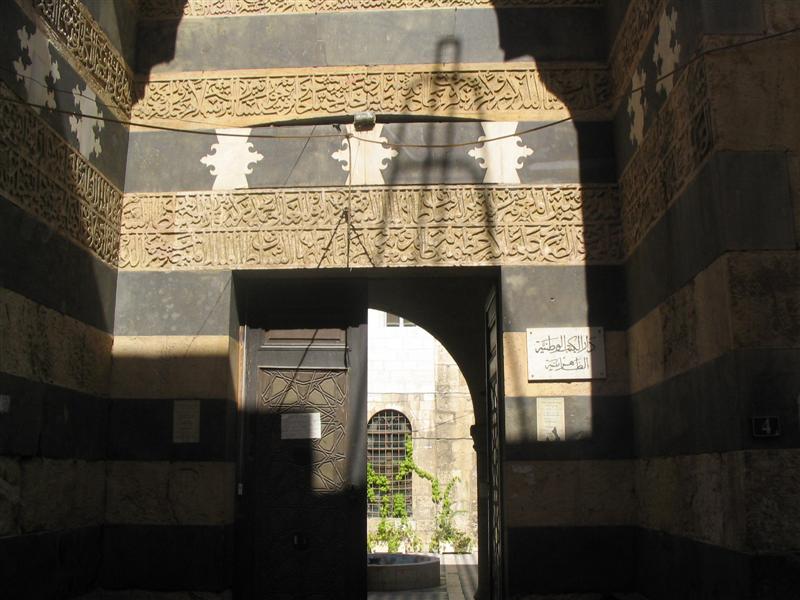- Az-Zahiriyah Library
Infobox School
name = Az-Zahiriyah library
imagesize = 200px
caption = Entrance to Az-Zahiriyah Library
motto =
established =1277
type =Public library ,Madrassah
affiliation = Islamic
district =
founder =Sultan Baibars
grades =
president =
principal =
head of school =
dean =
faculty =
staff =
students =
enrollment =
athletics =
conference =
colors =
mascot =
free_label =
free_text =
free_label2 =
free_text2 =
location =Damascus ,Syria
country =
coordinates =
homepage =The Az-Zahiriyah library in
Damascus, Syria dates back to1277 , taking its name from its founderSultan Baibars (1223 - 1277). Building this library was his father’s idea but he died before he could achieve it. Initially Az-Zahiriah was a public school in charge of teachingQuranic sciences. The decorations, carvings, and writing on the building walls, in addition to the gate which bears geometric designs and patterns, make the library one of the most important buildings in Damascus.The mosaics of the
Umayyad Mosque gave inspiration to the decoration of the main prayer hall where a band of lavish golden floral and architectural mosaics is running around. [ [http://www.archnet.org/library/sites/one-site.jsp?site_id=2777 Zahiriyya Madrasa and Mausoleum of Sultan al-Zahir Baybars ] ]The manuscript department includes over 13,000 classical
Islamic manuscripts, the oldest being ImamAhmad ibn Hanbal ’s "Kitab al-zuhd" and "Kitab al-fada'il". Other notable manuscripits include "Ta'rikh Dimashq" by Ibn 'Asakir (1105-1175), "al-Jam bayn al-gharibayn" by Abu `Ubaydah Ahmad ibn Muhammad Al-Harawi (d. 1010), and "Gharib al-hadith" by Ibn Qutaybah al-Dinawari (d. 889). [ Bibliography for Alternative Sources ofNahj al-Balagha ]The
library was nationally recognized by the Syrian state in1880 , and in1949 a legal deposit law decreed that two copies of every work published in Syria be deposited in al-Zahiriyah National Library. The law was not enforced until July1983 , when a presidential decree required the deposit of 5 copies of each work published by a Syrian author in the Al-Assad Library. The Al-Assad Library became the National Library of Syria, replacing al-Zahiriyah Library.Sultan Al-Zahir Baibars, also known as Rukn Uddin Baybrus (full name, al-Malik al-Zahir Rukn al-Din Baibars al-Bunduqdari) was buried in Damascus in 1277 under the dome of the Az-Zahiriyah library, established by him.
References
Wikimedia Foundation. 2010.
